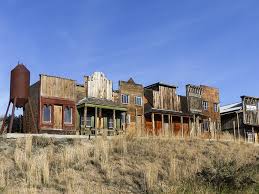 Tourism is alive an well in every part of the world. We all set out to explore the world around ourselves. Seeing natural wonders, visiting man-made attractions, and of course-exploring everything that is related to our world’s history. It is partially curiosity and possibly a desire to keep learning all the mysteries of the world. At least, as much as we can learn anyway. Perhaps this is the reason for our unending fascination with the old west. It is also what has spawned a new era. The one involving tiny house villages of the western world, which combines old history with new tiny house living.
Tourism is alive an well in every part of the world. We all set out to explore the world around ourselves. Seeing natural wonders, visiting man-made attractions, and of course-exploring everything that is related to our world’s history. It is partially curiosity and possibly a desire to keep learning all the mysteries of the world. At least, as much as we can learn anyway. Perhaps this is the reason for our unending fascination with the old west. It is also what has spawned a new era. The one involving tiny house villages of the western world, which combines old history with new tiny house living.
The Western World
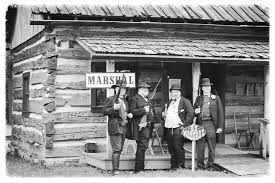 When we think of the old west, we think of cowboys, Indians, gun fights at the OK Corral, etc. We picture in our mind saloons and swinging doors.
When we think of the old west, we think of cowboys, Indians, gun fights at the OK Corral, etc. We picture in our mind saloons and swinging doors.
Many of those old sights are shut down. Gone forever. Or hidden in ghost towns. The “cowboy era” was basically started after the Civil War in 1865 and it ended around 1895. Some say that the invention of barbed wire was what triggered the end, and others say it was because of just the overall expansion that brought it to an end. More and more people moving in and “settling” the country.
No matter what triggered or ended the “Wild West”, it is a vital part of history for the U.S. It is a time that will be talked about until the end of the world as we know it. A time that we will continue to want to see in action-at least as much as we can.
Exposing Tourists to Tiny Living
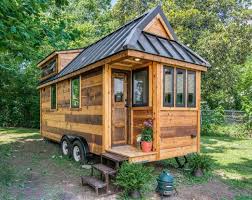 The glory of the west has faded some, but that doesn’t mean we cannot still experience the rustic ways of that time. The old ways can mix with newer technology. To see it in action, you can visit areas like the Leavenworth Tiny House Village. It is a place of tiny homes that allow you to experience the rustic west in your very own quaint little frontier home. The exception is that you will have power (if you want it) and more.
The glory of the west has faded some, but that doesn’t mean we cannot still experience the rustic ways of that time. The old ways can mix with newer technology. To see it in action, you can visit areas like the Leavenworth Tiny House Village. It is a place of tiny homes that allow you to experience the rustic west in your very own quaint little frontier home. The exception is that you will have power (if you want it) and more.
Another bonus is that these villages don’t require you to capture your own food. You will not have to shoot anyone, but they are popping up in areas all around the West from Utah to Texas and all areas in between.
Today’s technology will allow you to explore nearby “western” sights while you live as off-the-grid as you want. You can even use your smart devices to take pictures if you want. No one will mind.
Where Will Your Travels Take You?
There are “Ghost Towns” from the old west everywhere. You could travel to Bodie, California or visit Colorado’s Dunton Hot Springs or St. Elmo. You could visit Glenrio, Texas and others. You get to choose where your adventures will take you. We think you will enjoy every minute of your trip.
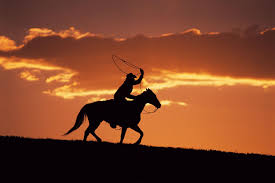 Once upon a time, soon after the civil war and establishing the western U.S. as a territory that had to be tamed, cowboys got their start. We aren’t talking about the typical cowboys you see in Hollywood movies. We are talking about the men who stood up for what they believed in (a good day’s work herding cattle) and tamed the west while they were at it. We are talking about the Doc Holiday, Wyatt Earp, good guy, bad guy, type cowboys only with a little twist.
Once upon a time, soon after the civil war and establishing the western U.S. as a territory that had to be tamed, cowboys got their start. We aren’t talking about the typical cowboys you see in Hollywood movies. We are talking about the men who stood up for what they believed in (a good day’s work herding cattle) and tamed the west while they were at it. We are talking about the Doc Holiday, Wyatt Earp, good guy, bad guy, type cowboys only with a little twist.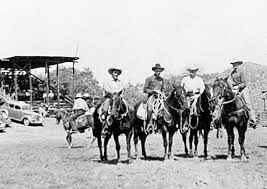 The “cowboy” was a group of people who would herd cattle to the northern territories where beef was a commodity. There would typically be 6-8 men riding in a group to get roughly 3,000 cattle at one time to railroad depots or up north where it could be sold for as much as $40 per cow. It was a rough life. The cattle would be branded to show which farm owned it and occasionally conflicts did come up. It was a way of life that was rough, a fact which was proven in 1886-1887 when an exceptionally cold winter killed most cattle.
The “cowboy” was a group of people who would herd cattle to the northern territories where beef was a commodity. There would typically be 6-8 men riding in a group to get roughly 3,000 cattle at one time to railroad depots or up north where it could be sold for as much as $40 per cow. It was a rough life. The cattle would be branded to show which farm owned it and occasionally conflicts did come up. It was a way of life that was rough, a fact which was proven in 1886-1887 when an exceptionally cold winter killed most cattle.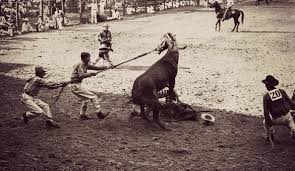 After the big freeze, the “cowboy era” was slowed drastically. Fewer cattle would be moved at one time. Feuds over property lines meant that farmers turned to barbed wire to protect what was there. Some cowboys turned to a more “lawless” existence while others simply wanted to work with cattle on a private farm where an average workday would last about 15 hours a day.
After the big freeze, the “cowboy era” was slowed drastically. Fewer cattle would be moved at one time. Feuds over property lines meant that farmers turned to barbed wire to protect what was there. Some cowboys turned to a more “lawless” existence while others simply wanted to work with cattle on a private farm where an average workday would last about 15 hours a day.